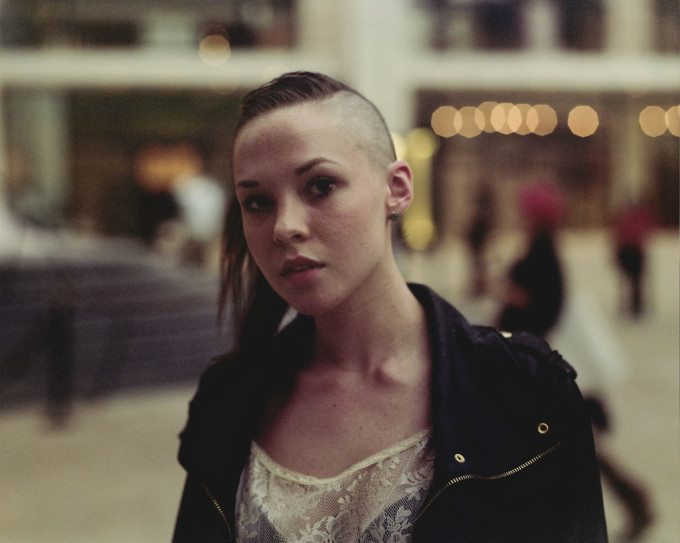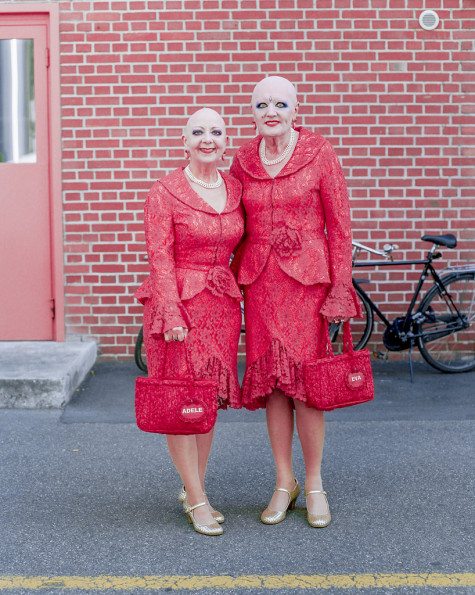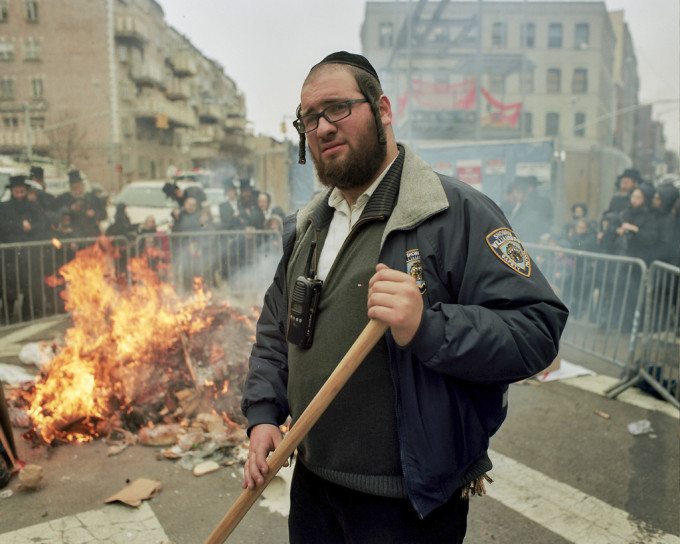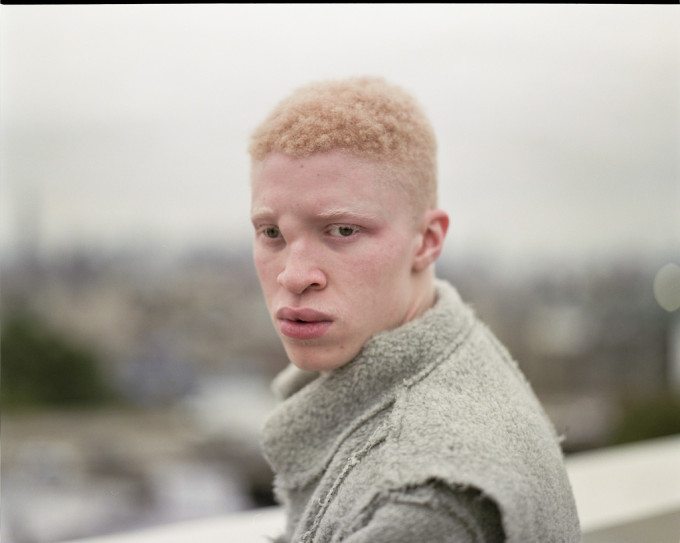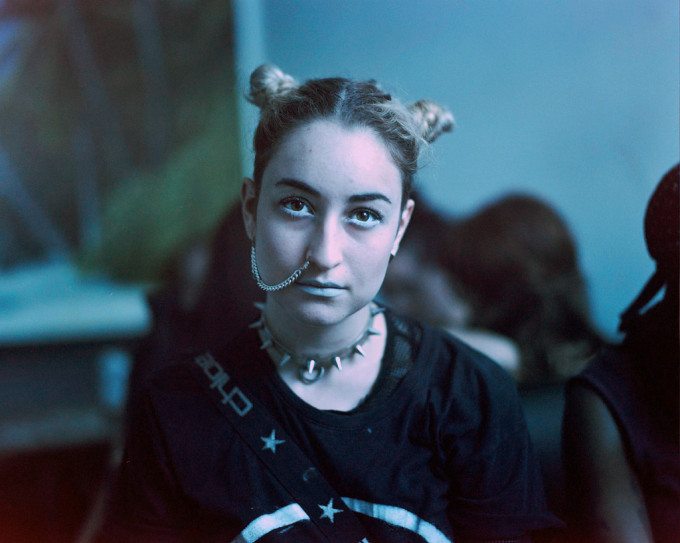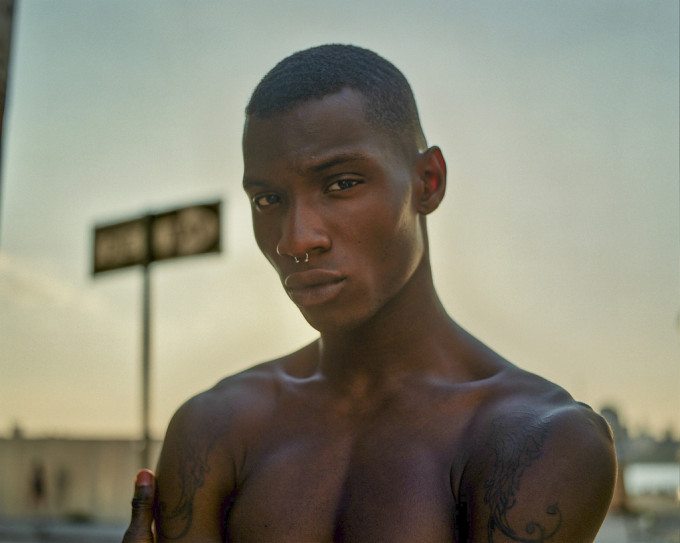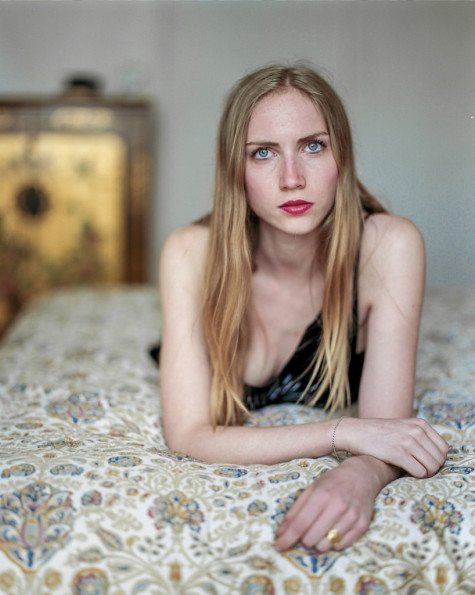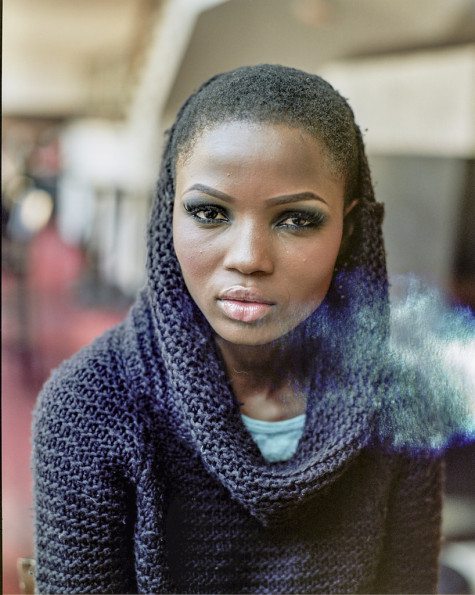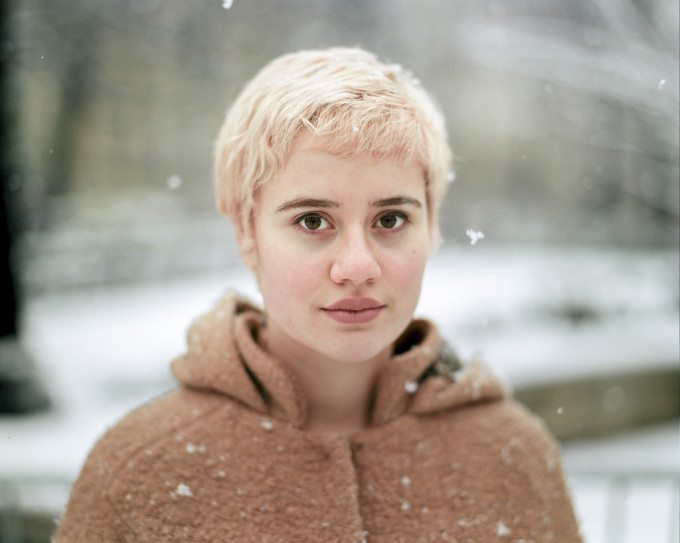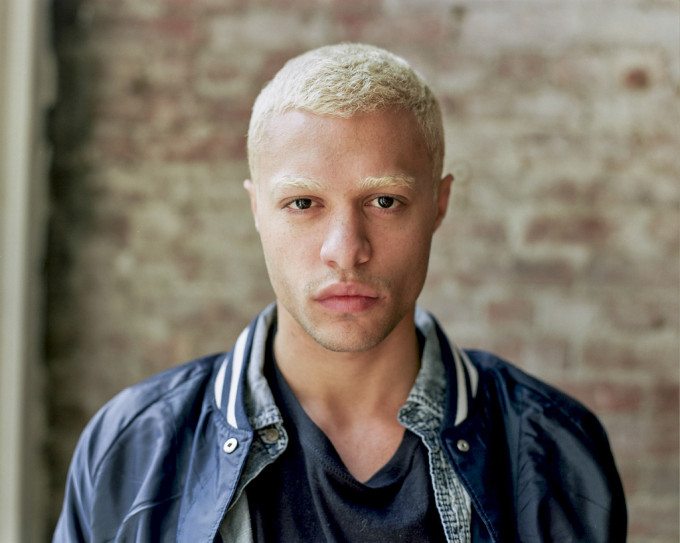All images by Simon Chetrit. Used with permission.
Photographer Simon Chetrit has been shooting for many years now, and he’s almost never seen here in Brooklyn without his venerable Pentax 67. Simon has used the camera for many years and bonded with it in some ways. Every photographer has a camera that helped them build their career, and his is the 67. Simon tells us that the camera helped him develop confidence in himself and get over shyness when interacting with strangers on the streets.
Like many other modern film shooters, Simon loves the fact that shooting film forces him to put more effort into the photo before he even presses the shutter.
Phoblographer: Talk to us about how you got into photography.
Simon: Photography for me was an accident. At the time, around 6-7 years ago, I was applying to schools for video game design which necessitated sending out lots of drawings. I went to B&H one day and ended up buying a 30D to document these drawings and help my process of applying to schools. Photography took over my life. I went everywhere with that 30D, became more and more obsessed, and slowly started spending every single day out and about, photographing, slowly moving more towards portraits. The rest was history.
Phoblographer: You’ve been known for years in New York for really using the Pentax 6×7 camera and very little else. What attracted you to it vs working more with digital?
Simon: There was a time period where I had grown comfortable with my digital camera and wanted to take the next logical step. I had already been shooting 35mm for a while, and wanted to keep experimenting, seeing what was out there. I had seen lots of strong medium format work on Flickr and didn’t feel up to the challenge of large format yet, so that (MF) seemed to be a good thing to explore. I researched all the different types of MF cameras out there and settled on the 6×7 for a variety of reasons. One of them being that it’s pretty cheap, about $500 for a body and lens in good condition. Also that it’s 6×7 as opposed to 6×6, I like to shoot portrait style a lot.
There was actually a fairly long time period in which my digital camera completely stopped working and I only had my Pentax 6×7 to use, whether I wanted to or not. And phone cameras were not really “there” yet, so I actually had no working digital camera for a while. It was a variety of things. But mainly wanting to get into MF, and the low barrier to entry. Also, the Pentax system has wider lenses than the Hasselblad, and you can shoot it (the Pentax) like an overgrown 35mm, which was perfect for me at that time. And that handle is sexy as fuck. The extra-shallow DoF helped a lot too, the standard/kit lens for a Pentax 6×7 is usually the 105mm f/2.4 and f/2.4 on a 6×7 is incredibly shallow.
Phoblographer: 6×7 is really said to be a great format for getting excellent negatives, but those cameras can be tough to work with without a tripod. How have you managed overall?
Simon: Honestly, I find it easier to work with than my digital a lot of the times. I’ve got a 5D MK3 now which I love, but I often push the shutter button on it a bit hard, which causes camera shake at slower exposures. I rarely have this problem on the Pentax as it’s so much larger and more solid, it barely moves when I depress the shutter button.
Heck, I think I’ve used it with a tripod maybe once or twice? It’s a handheld camera to me, purely. It makes sense in my hands. Maybe it’s because I’m kind of a big guy myself, but even though it is quite heavy, I’ve gone all over the world with it, all over the US, to deserts and tomato fights, in rain storms…
Every kind of condition you can imagine, I’ve shot my Pentax 67 in and it’s endured it admirably. It’s a fucking tank. I’ve also got Beattie Screens in my Pentax body now, so that helps a lot. I rarely miss focus on it, even at the more open apertures, because the viewfinder is so large and luxurious. The MK3 viewfinder feels small and dark in comparison. Also, digital cameras these days have that little focus adjustment dial right by the viewfinder which is the bane of my existence. At the end of the day, the Pentax 67, although large, heavy, and unwieldy to some, is an eminently shootable camera. I wouldn’t quite call it a point and shoot, but with the viewfinder prism on there, it’s pretty straightforward.
Phoblographer: We’ve talked to you before about getting the best film development and scans that you possibly can. What do you feel makes for great scans and development overall considering all the work that you put in with 6×7?
Simon: Oh boy. Scanning is a whole other monster that I try not to think about too much, but development is pretty easy. For scans, I usually opt for a pretty neutral scan as I most often shoot Portra 400 and the colors are already fairly vibrant to start with. I also generally do not feel the need to get .TIFs and other larger files done because the negatives themselves are so large that even a respectable .JPEG is more than good enough for use on the internet.
A properly exposed negative doesn’t usually need much work thereafter to look good, which is part of why I love film. Shooting film makes you really obsess over your initial exposure and settings quite a bit, which I think is a great habit for any photographer to have. “Worry about it in Photoshop” simply isn’t a practical option. If I really wanted to go all out with scanning, I would find a NY based photo department of a college and rent time with their X5 Imacon. But seeing as those run for about $20,000 a pop on eBay these days, it’s not really an option.
I’ve considered messing around with wet scans, but honestly, a 1600×2000 scan of a 6×7 negative is way better than most people even care to see on the web these days, and I’ve got my negatives arranged in a binder if I ever need to scan larger or make a big print. I’m not doing anything fancy like push processing so the development isn’t that big of a concern for me. I often joke that I’m secretly a digital photographer, I just happen to use a Pentax 6×7. I get every single negative scanned and upload a good portion of it, and do most of my post-processing in Lightroom.
The secret to getting a good scan is to do everything you can to get a nice, dense, well exposed negative in-camera, an attitude that extends to my digital work as well. You don’t get a second chance on film, which is why I love it.
“Shooting film makes you really obsess over your initial exposure and settings quite a bit, which I think is a great habit for any photographer to have. “Worry about it in Photoshop” simply isn’t a practical option.”
Phoblographer: What attracts you to shooting portraits and in particular to the subjects that you photograph.
Simon: I love people, especially in an anthropological sense. There is simply an endless diversity, an infinite variety to how people can look, how their faces can be arranged, and I could obsess over it until the end of time. It fascinates me. That’s a huge draw of the 6×7 system for me, the detail is astonishing. When I really nail an exposure, I can see every pore on a person’s face, the texture of their skin, their hair, their lips. More so than I can even see looking at them with my own two eyes. Getting that kind of detail out of a street portrait that took maybe 30 seconds to a minute to ask for an do is really an amazing thing. I really like lips and noses a lot.
One time, I had a Harvard-educated philosopher over at my apartment, and I was showing him my Flickr stream. He (accurately) pointed out that I am very drawn to people with nose piercings. It’s true. I do tend to seek them out for whatever reason. Usually, though, it’s something in the person’s style, in how they carry themselves, the texture of their skin, a distinct facial feature, the clothes they’re wearing… Sometimes, I’ll just see people standing in front of something, and everything will just fit. They barely have to budge a muscle for me to take the picture that I want.
“You don’t get a second chance on film, which is why I love it.”
Phoblographer: Most folks would be terrified of simply asking someone for their portrait. How did you get over that fear?
Simon: One of the reasons I first fell in love with photography was because of how shy and nerdy and awkward I was when I first started going out and about with a camera. It forced me to go to different places, approach different people, be more outgoing, in order to get the pictures that I really wanted and would be happy with. There were whole days where it was all I did. And with the Pentax 6×7, even more so. I thought about it logically. You can kind of pre-screen people for their willingness to be photographed, i.e., if they’re really dressed up, if they’re fashionable, if they don’t seem too busy. And really, think about it: is someone being asked for their picture the weirdest thing that’s going to happen to a New Yorker on any given day? Absolutely not. It’s flattering, too.
Somedays, people leave their apartments hoping and praying that someone will notice them just enough to take a nice picture of them, to give them the time of day, to make them feel special. In a sense, you could be doing someone a favor by asking them for their picture and following through. It was never something that I was actually afraid of, but as I’ve grown more confident in my skills as a photographer, more in control of my cameras, I knew that I truly was giving them a gift.
It’s the irony of our camera-filled lives: We all have cameras today, every phone has a camera built into it today, there are cameras in the sky, in traffic lights, drones, privacy is a thing of the past… But how many people have actually got a decent photograph of themselves, taken by someone with care, with good equipment and a good handle on how to use it? It’s every bit as much of a privilege as it was 50 years ago, and it stands out even more today because of how saturated we are with (relatively) low-res digital images.
There are some cultural issues, though. My family is Moroccan and we visit there from time to time, asking a veiled woman for a photograph can be considered fairly rude, although I’ve done it a few times. In Berlin, where privacy is a real concern thanks in part to the legacy of the Stasi and the GDR, cameras are forbidden in most, if not all, clubs and bars, and taking pictures of someone without asking would definitely upset them. I actually almost got into a fight with a burly German doorman once because I happened to take a picture of the bar (not him) on the way out. He threatened me and made me remove all the film from my camera before he would let me leave. But in New York? Stranger shit happens every day, and with the super-blase, jaded, over-it New Yorker stereotype that everyone’s trying to fit into, it’d be bizarre of them to say no.
Regardless of where I’ve been, of cultural differences, of any embarrassment I may feel, and regardless of my proficiency with the camera at the time, my response rate has been upwards of 95% of people simply saying “Yes.” with no qualifications. I honestly don’t think anyone has ever straight up said “no” to me without at least providing a reason. There really is nothing to be afraid of. Having a good bedside manner helps a lot, though.
Phoblographer: You’ve been using Flickr for years now to promote your work and have received a fair amount of attention with it. How do you feel that the community has changed over the years?
Simon: I love Flickr. I probably wouldn’t have kept up with photography as much as I have if not for Flickr. At the time I joined, it was the only game in town. Now, with competitors like Tumblr and Instagram, I think Flickr has evolved to a nice place. The photo viewer is nicer than it ever was, the community is distinctly photography-oriented, and there’s a lot of engagement when the content is there.
It used to be a bit like the wild west when I first started on there, it was a bit like DeviantArt. It wasn’t that curated. Now, it’s an incredible incubator for great artists around the world. You’ve got folks like Lou Noble, Tamara Lichenstein, Olivia Bee…All with big Flickr presences, being really active, uploading good work all the time. It’s something that’s inspired me and kept me going with little nuggets of encouragement throughout the years and I think they’re once again in a good place after a few years of uncertainty. Although I am now putting a lot of my stuff on Instagram, too.
“One of the reasons I first fell in love with photography was because of how shy and nerdy and awkward I was when I first started going out and about with a camera. It forced me to go to different places, approach different people, be more outgoing, in order to get the pictures that I really wanted and would be happy with.”


